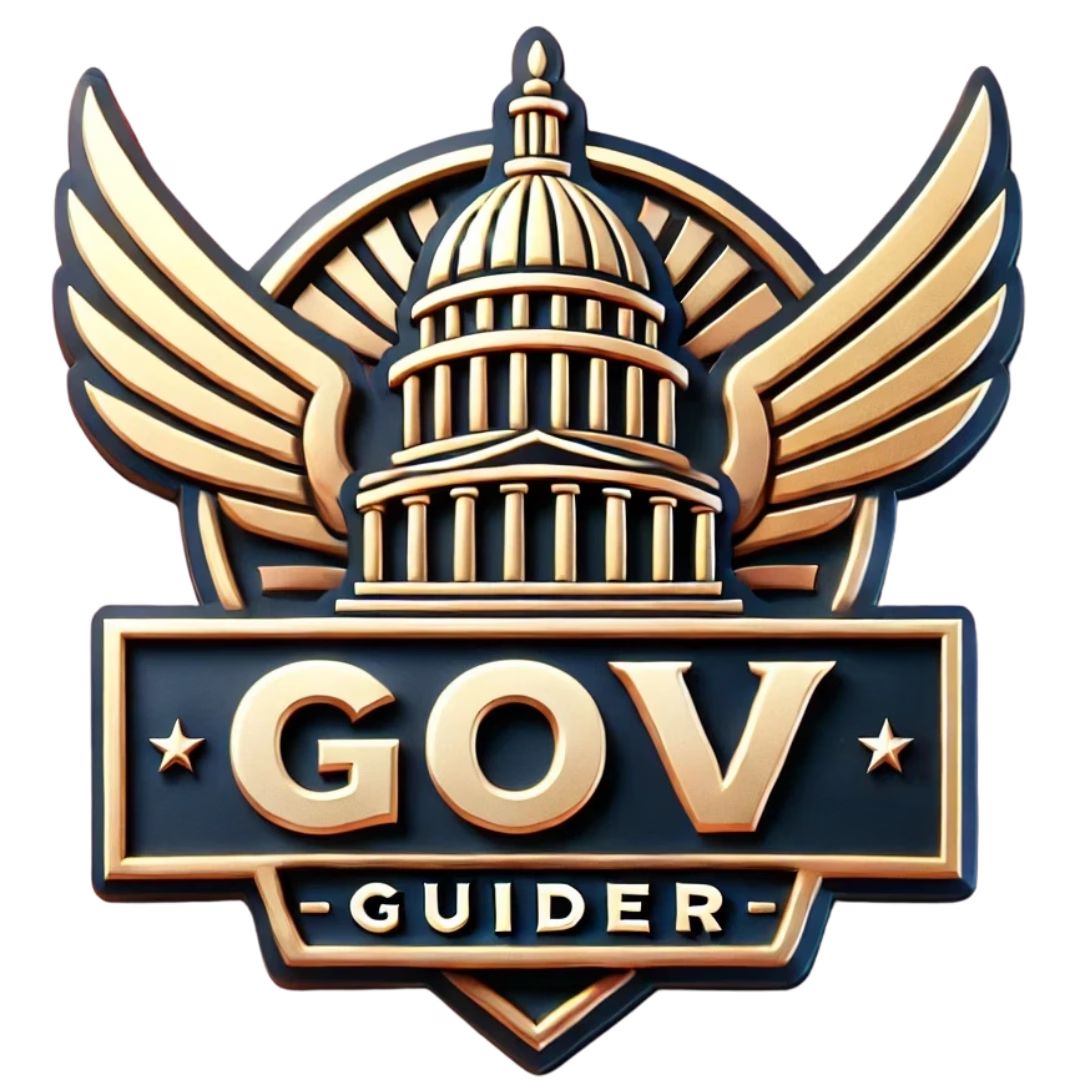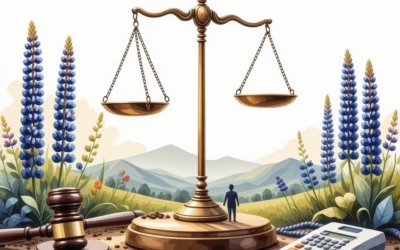Key Takeaways
- Filing for bankruptcy in North Dakota without an attorney is possible, but it involves understanding complex legal requirements and procedures.
- Key costs include court filing fees (approximately $335 for Chapter 7, $310 for Chapter 13), credit counseling fees, and potential document preparation costs.
- Common challenges of pro se bankruptcy include navigating court procedures, gathering required documentation, and understanding various bankruptcy types.
- Consider alternatives to bankruptcy such as debt consolidation and credit counseling before proceeding with filing.
- Successful navigation of the bankruptcy process requires thorough research, organization, and utilization of available resources like local legal aid and online guides.
Filing for bankruptcy can be a daunting process, especially when navigating the complexities without the assistance of an attorney. In this comprehensive guide, we will explore how to file for bankruptcy in North Dakota without an attorney, providing you with essential insights and actionable steps to take control of your financial future. From understanding the costs associated with filing to the challenges you may face while going through the process alone, we will cover all the critical aspects you need to know. Additionally, we will delve into the types of bankruptcy available, including which options can clear your debts without payment, and what disqualifies you from filing. By the end of this article, you will have a clear roadmap to successfully navigate the bankruptcy process in North Dakota, empowering you to make informed decisions about your financial health.
How much does it cost to file for bankruptcy in North Dakota?
Filing for bankruptcy in North Dakota involves several costs that individuals should be aware of before proceeding. Understanding these fees can help you prepare financially for the bankruptcy process and ensure that you are making informed decisions. The primary cost associated with filing for bankruptcy is the court filing fee, which is approximately $338. This fee is specifically linked to the filing of a Voluntary Petition for Individuals Filing for Bankruptcy (Form 101).
Understanding Bankruptcy Filing Fees in North Dakota
In addition to the standard filing fee, there are a few options available to help manage these costs:
- Installment Payments: If you cannot pay the filing fee upfront, you can apply to pay it in installments using Form 103A. This option allows for more manageable payments over time, making it easier for individuals facing financial hardship.
- Fee Waiver: For those whose income falls below a certain threshold, it may be possible to have the Chapter 7 filing fee waived by submitting Form 103B. This is particularly beneficial for low-income individuals seeking relief through bankruptcy.
It is essential to consult with a bankruptcy attorney or a financial advisor to understand the full scope of costs involved, including potential legal fees, which can vary significantly based on the complexity of your case. For more detailed information, you can refer to the U.S. Courts website or the North Dakota state court resources.
Additional Costs Associated with Filing Without an Attorney
While filing for bankruptcy without an attorney can save on legal fees, there are still additional costs to consider. These may include:
- Credit Counseling Fees: Before filing for bankruptcy, individuals are required to complete a credit counseling course, which typically incurs a fee.
- Document Preparation Costs: If you choose to use online services or software to prepare your bankruptcy forms, there may be associated costs for these services.
- Miscellaneous Fees: Additional costs may arise from obtaining necessary documents, such as credit reports or court records.
Being aware of these potential costs can help you budget effectively as you navigate the bankruptcy process. Always ensure that you are informed about any fees and seek assistance if needed to avoid unexpected financial burdens.

How much does it cost to file for bankruptcy in North Dakota?
Understanding the costs associated with filing for bankruptcy in North Dakota is essential for anyone considering this option. The total expenses can vary based on several factors, including the type of bankruptcy you choose and whether you hire an attorney or file pro se (without an attorney).
Understanding Bankruptcy Filing Fees in North Dakota
In North Dakota, the primary cost to file for bankruptcy includes the court filing fee, which is typically around $335 for Chapter 7 bankruptcy and $310 for Chapter 13 bankruptcy. These fees are subject to change, so it’s advisable to check the U.S. Courts website for the most current information. Additionally, if you cannot afford the filing fees, you may apply for a fee waiver or request to pay in installments.
Additional Costs Associated with Filing Without an Attorney
When filing for bankruptcy without an attorney, there are additional costs to consider. These may include:
- Credit Counseling Fees: Before filing, you must complete a credit counseling course, which typically costs between $10 and $50.
- Document Preparation Services: If you choose to use a document preparation service to help with your paperwork, expect to pay anywhere from $100 to $300.
- Miscellaneous Costs: This can include costs for obtaining copies of documents, mailing fees, and any other related expenses.
Overall, while filing for bankruptcy without an attorney can save on legal fees, it’s crucial to budget for these additional costs to ensure a smooth filing process.
Is it hard to file bankruptcy without a lawyer?
Filing for bankruptcy without a lawyer, known as pro se bankruptcy, is indeed possible, but it can be quite challenging. Here are key considerations to keep in mind:
Common Challenges Faced When Filing Bankruptcy Pro Se
The complexities of bankruptcy law can be overwhelming. Here are some common challenges:
- Complexity of Bankruptcy Law: Bankruptcy law is intricate and varies by state. Understanding the specific requirements, forms, and procedures is crucial. Mistakes can lead to delays or dismissal of your case.
- Types of Bankruptcy: Familiarize yourself with the different types of bankruptcy, such as Chapter 7 and Chapter 13. Each has distinct eligibility criteria and implications for your assets and debts.
- Documentation Requirements: You will need to gather and submit extensive documentation, including income statements, tax returns, and a list of debts and assets. Ensuring accuracy and completeness is vital.
- Court Procedures: Navigating court procedures can be daunting. You must attend hearings and may need to respond to objections from creditors. A lawyer can help you prepare for these proceedings.
- Long-term Consequences: Bankruptcy can have lasting effects on your credit score and financial future. Consulting with a knowledgeable attorney can help you understand these implications and explore alternatives.
- Resources Available: If you choose to proceed without legal representation, utilize resources like the Bankruptcy Information website, which provides information on filing procedures and forms. Additionally, local legal aid organizations may offer assistance.
Tips for Successfully Navigating the Bankruptcy Process Alone
To improve your chances of a successful bankruptcy filing without an attorney, consider the following tips:
- Research Thoroughly: Familiarize yourself with the bankruptcy process, including the necessary forms and deadlines.
- Stay Organized: Keep all your documents organized and ensure you have everything required for your filing.
- Utilize Available Resources: Take advantage of online resources and local legal aid services that can provide guidance.
- Prepare for Court: Understand what to expect during court hearings and be ready to present your case clearly.
In conclusion, while it is feasible to file for bankruptcy without a lawyer, the complexities involved make it advisable to seek professional guidance. Legal expertise can significantly improve your chances of a successful outcome and help you navigate the process more effectively.
How much does it cost to file for bankruptcy in North Dakota?
Understanding the costs associated with filing for bankruptcy in North Dakota is crucial for anyone considering this option. The primary expenses include court fees and potential additional costs that may arise during the process. Knowing these costs can help you prepare financially and avoid surprises.
Understanding Bankruptcy Filing Fees in North Dakota
In North Dakota, the basic filing fee for Chapter 7 bankruptcy is approximately $335, while Chapter 13 bankruptcy costs around $310. These fees are paid directly to the bankruptcy court at the time of filing. If you cannot afford these fees, you may request a fee waiver or apply to pay in installments. It’s essential to check the U.S. Courts website for the most current fee structure and any changes that may occur.
Additional Costs Associated with Filing Without an Attorney
Filing for bankruptcy without an attorney, also known as pro se filing, can save you on legal fees, but it may lead to other costs. These can include:
- Credit Counseling Fees: Before filing, you must complete a credit counseling course, which typically costs between $10 and $50.
- Document Preparation Costs: If you choose to use online services or software to prepare your bankruptcy forms, there may be additional charges ranging from $50 to $200.
- Post-Filing Fees: After filing, you may incur costs related to obtaining copies of your bankruptcy petition or other court documents.
Being aware of these potential expenses can help you budget effectively as you navigate the bankruptcy process. For a comprehensive list of North Dakota bankruptcies, you can refer to the North Dakota bankruptcies list.
What Happens When You File for Bankruptcy in North Dakota?
Filing for bankruptcy in North Dakota initiates a legal process that can significantly impact your financial situation. Understanding what to expect after filing is crucial for navigating this challenging time.
The Bankruptcy Process: What to Expect After Filing
Once you file for bankruptcy, an automatic stay goes into effect, which halts most collection activities against you. This means creditors cannot pursue you for debts, and any ongoing lawsuits or wage garnishments will be paused. Here’s a breakdown of the key steps in the bankruptcy process:
1. **Credit Counseling**: Before filing, you must complete a credit counseling course from an approved provider. This course helps you understand your financial situation and explore alternatives to bankruptcy.
2. **Filing the Petition**: You will submit a bankruptcy petition along with schedules detailing your debts, assets, income, and expenses. This document is crucial for the court to assess your financial status.
3. **341 Meeting of Creditors**: Approximately 20 to 40 days after filing, you will attend a meeting where creditors can ask questions about your financial situation. This meeting is overseen by a bankruptcy trustee.
4. **Discharge of Debts**: If you successfully complete the bankruptcy process, you will receive a discharge, which eliminates most of your debts. This typically occurs a few months after your 341 meeting.
5. **Post-Bankruptcy Obligations**: After your debts are discharged, you may still have obligations, such as maintaining certain payments on secured debts or adhering to any court orders.
For more detailed information on the bankruptcy process, you can visit the official [U.S. Courts](https://www.uscourts.gov/) website.
Impact of Bankruptcy on Your Credit and Financial Future
Filing for bankruptcy has significant implications for your credit score and financial future. Here are some key points to consider:
– **Credit Score Impact**: Bankruptcy can lower your credit score by 100 points or more, depending on your financial history. It will remain on your credit report for up to 10 years, affecting your ability to secure loans or credit.
– **Future Borrowing**: After bankruptcy, obtaining credit may be challenging. Lenders may view you as a higher risk, leading to higher interest rates or denial of credit applications.
– **Rebuilding Credit**: While bankruptcy can be detrimental to your credit score, it also provides an opportunity to rebuild. By making timely payments on any remaining debts and using credit responsibly, you can gradually improve your credit standing.
Understanding these aspects of the bankruptcy process can help you make informed decisions as you navigate your financial recovery. For more resources on managing your credit post-bankruptcy, consider visiting [Nolo](https://www.nolo.com/) for comprehensive legal information.

How much debt should I have to file bankruptcy?
Determining the right amount of debt for filing bankruptcy in North Dakota is a crucial step in the process. While there is no specific minimum amount of debt required to file, understanding your financial situation can help you make an informed decision. Generally, individuals consider filing for bankruptcy when their debts become unmanageable, and they are unable to meet their financial obligations.
Determining the Right Amount of Debt for Bankruptcy Filing
When evaluating whether to file for bankruptcy, consider the following factors:
- Debt-to-Income Ratio: A high debt-to-income ratio indicates that a significant portion of your income goes toward debt repayment, making it difficult to cover essential living expenses.
- Type of Debt: Unsecured debts, such as credit card balances and medical bills, are often the primary reason individuals file for bankruptcy. If these debts are overwhelming, it may be time to consider filing.
- Asset Protection: If your debts exceed your assets, bankruptcy may help protect you from losing essential property. Understanding North Dakota bankruptcy exemptions can provide insight into what you can keep.
Exploring Alternatives to Bankruptcy for Managing Debt
Before deciding to file for bankruptcy, explore other options that may help manage your debt:
- Debt Consolidation: Combining multiple debts into a single loan can simplify payments and potentially lower interest rates.
- Credit Counseling: Seeking advice from a certified credit counselor can provide strategies for budgeting and debt management without resorting to bankruptcy.
- Negotiating with Creditors: Directly negotiating with creditors for lower payments or settlements can sometimes alleviate financial pressure.
For more information on managing debt and understanding your options, you can visit Nolo for legal information and resources.
How much debt should I have to file bankruptcy?
Determining the Right Amount of Debt for Bankruptcy Filing
Filing for bankruptcy in North Dakota does not require a specific minimum amount of debt. Instead, the focus is on whether your debts are unmanageable given your financial situation. Here are key factors to consider when evaluating your debt:
- Income and Expenses: Analyze your monthly income against your expenses to gauge your financial capacity.
- Debt Type: Differentiate between unsecured debts (like credit cards and medical bills) and secured debts (like mortgages and car loans), as they have different implications in bankruptcy.
- Ability to Repay: Assess your realistic ability to repay debts. If repayment seems impossible, bankruptcy may be a viable option.
- Means Test: For Chapter 7 bankruptcy, passing a “means test” is essential. This test compares your income to the median income in North Dakota to determine eligibility.
- Asset Protection: Evaluate the value of your assets and whether they can be protected under bankruptcy laws, as certain assets may be exempt from liquidation.
Exploring Alternatives to Bankruptcy for Managing Debt
Before deciding to file for bankruptcy, consider exploring alternative debt relief options. These may include:
- Debt Consolidation: Combining multiple debts into a single loan with a lower interest rate can simplify payments.
- Negotiation with Creditors: Contacting creditors to negotiate lower payments or settlements can provide relief without the need for bankruptcy.
- Credit Counseling: Seeking help from a non-profit credit counselor can offer strategies for managing debt effectively.
If your debts are overwhelming and you cannot realistically repay them, bankruptcy may be necessary. For more information on bankruptcy processes, you can refer to Bankruptcy Information for official resources.
North Dakota bankruptcies list
Understanding the landscape of North Dakota bankruptcies is crucial for anyone considering filing for bankruptcy without an attorney. The bankruptcy filings in North Dakota provide insight into the types of cases being handled and the common challenges faced by individuals in similar situations. This section will explore resources for finding North Dakota bankruptcy filings and the types of bankruptcies commonly filed in the state.
Resources for Finding North Dakota Bankruptcy Filings
To access the U.S. Courts database, individuals can search for bankruptcy filings by state, including North Dakota. This resource allows you to view a comprehensive list of recent bankruptcy cases, which can be beneficial for understanding trends and outcomes. Additionally, local courthouses often maintain records of bankruptcy filings that can be accessed by the public. You can visit the Bankruptcy Information site for official resources and guidance on how to navigate these records.
Understanding the Types of Bankruptcies Filed in North Dakota
In North Dakota, the most common types of bankruptcies filed include Chapter 7 and Chapter 13. Chapter 7 bankruptcy, often referred to as “liquidation bankruptcy,” allows individuals to discharge most of their debts, providing a fresh start. On the other hand, Chapter 13 bankruptcy involves a repayment plan that allows individuals to keep their assets while repaying debts over a period of three to five years. Understanding these options is essential for anyone considering filing for bankruptcy without an attorney, as the choice between them can significantly impact your financial future.




